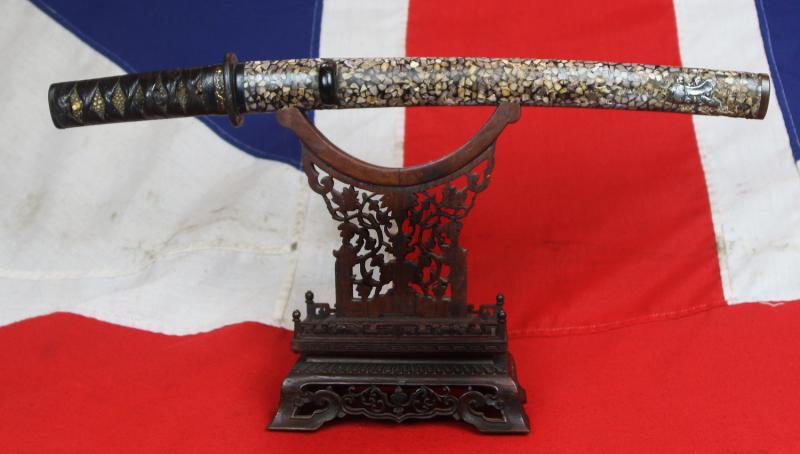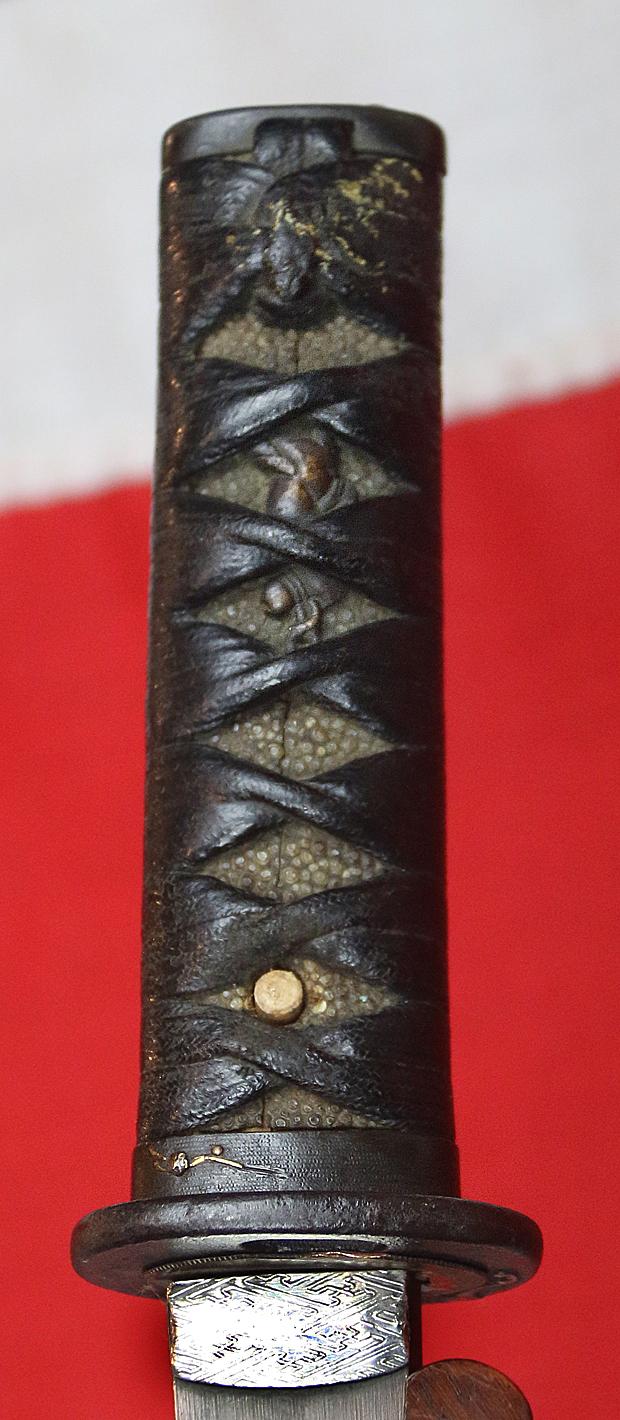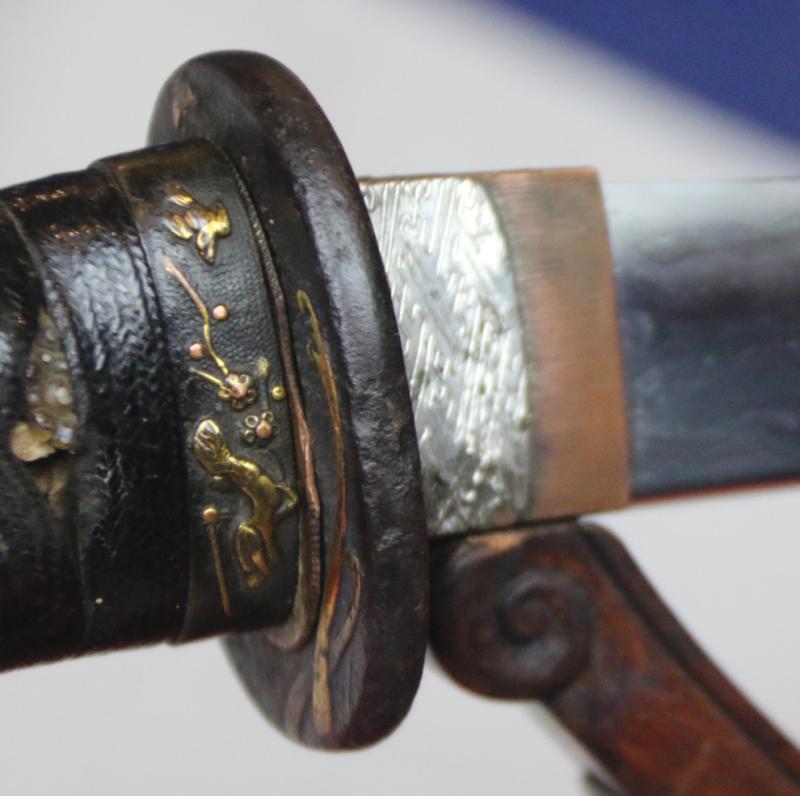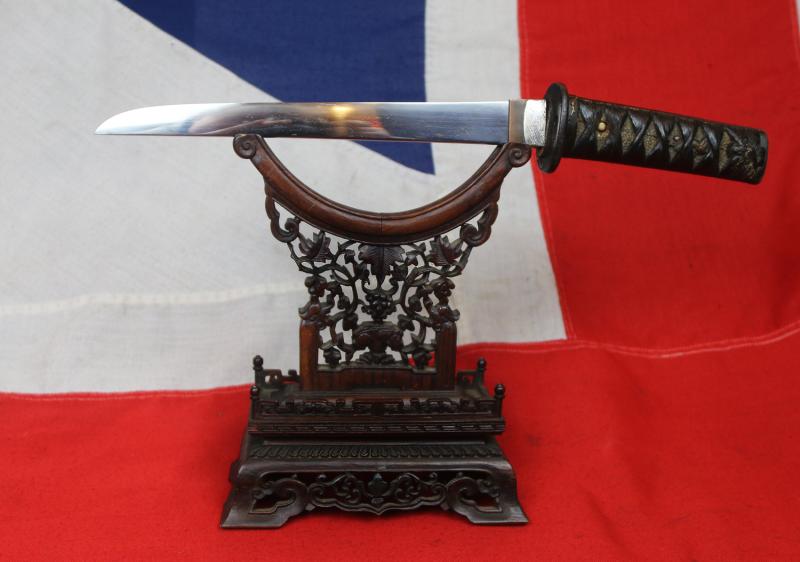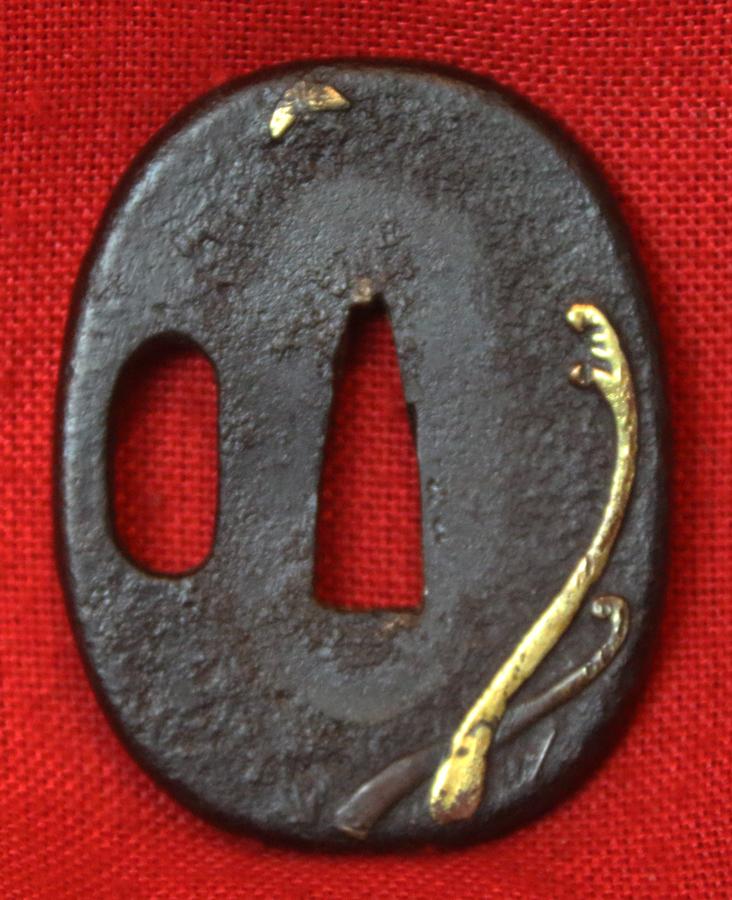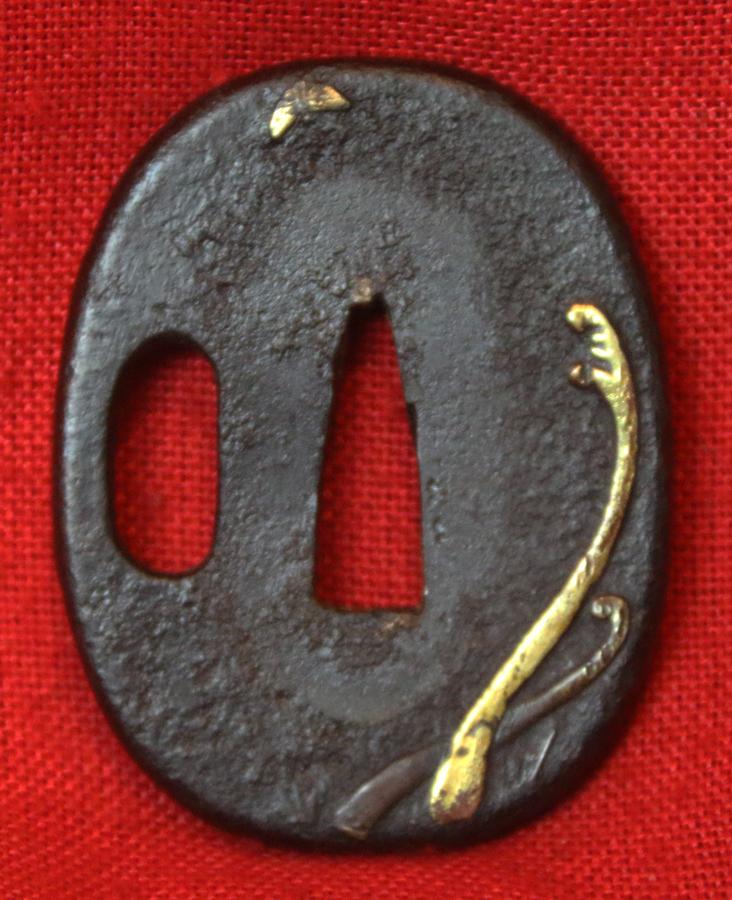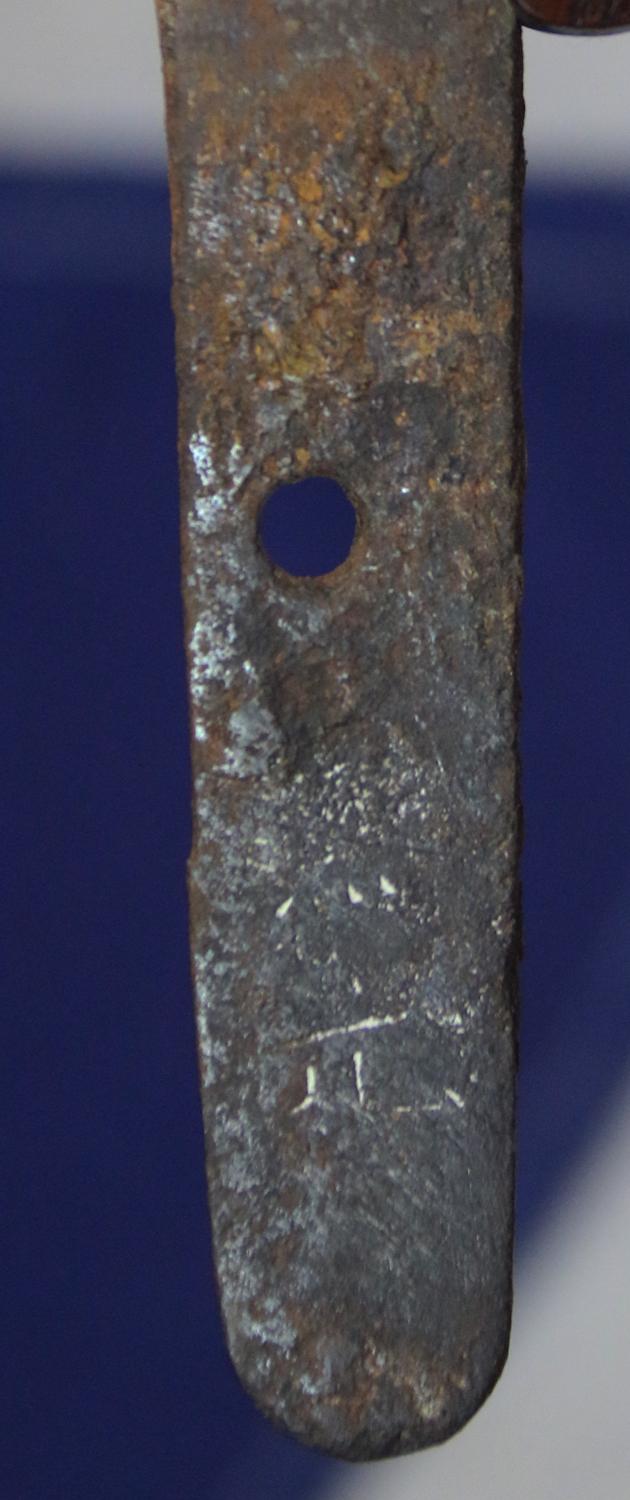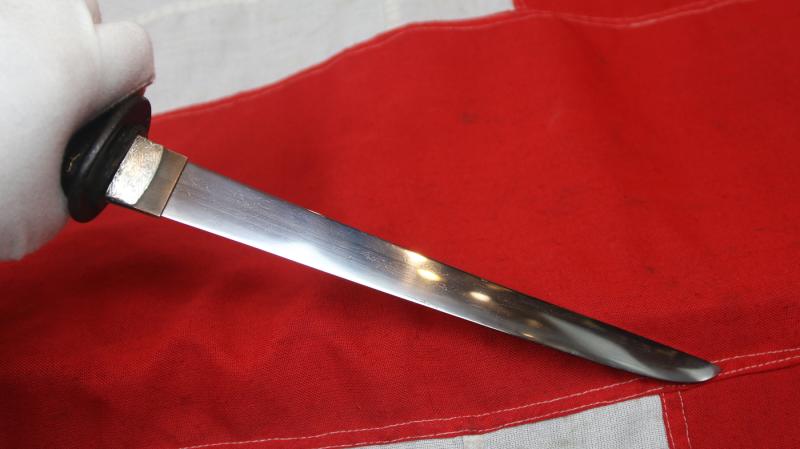An Opportunity to Acquire An Original Almost 700 Year Old, Ancient & Beautiful Samurai Dagger, A Signed, 14th Century Nambokochu Period Ancient Samurai Tanto
Now showing a beautiful blade polish, with all its original, Edo period, fine quality fittings. Including a pair of shakudo and gold fuchi kashira, a gold onlaid tetsu tsuba, a signed blade kozuka utility knife, and a menuki, under the original edo period tsuka ito, of a samurai's pony with its samurai saddle and abumi [stirrup], being attacked by a tiger. The saya is elaborately decorated with inlaid shell and horn type pieces on the black lacquer background. with polished buffalo horn carved fittings and a silver and soft metal saya mount of two seated figures. The scabbard surface has had a few contemporary Edo period surface repairs.
The blade is of typical ancient Nambokochu form and shape with a signed nakago, and shows stunning grain, and a solid silver overlaid two part habaki decorated with an embossed geometric patterning.
It is an ancient samurai tanto, in incredible condition for its great age, it obviously shows signs of use fro the past 600 odd years, but what an amazing piece.
The tanto was invented partway through the Heian period, when it was mainly used as a weapon. With the beginning of the Kamakura period, tanto were forged to be more aesthetically pleasing, and hira and uchi-sori tanto were the most popular styles for wars in the kamakura period. Near the middle of the Kamakura period, more tanto artisans were seen, increasing the abundance of the weapon, and the kanmuri-otoshi style became prevalent in the cities of Kyoto and Yamato. Because of the style introduced by the tachi in the late Kamakura period, tanto began to be forged longer and wider. The introduction of the Hachiman faith became visible in the carvings in the tanto hilts around this time. The hamon (line of temper) is similar to that of the tachi, except for the absence of choji-midare, which is nioi and utsuri. Gunomi-midare and suguha are found to have taken its place. In Nambokucho, the tanto were forged to be up to forty centimetres as opposed to the normal one shaku (about thirty centimetres) length. The tanto blades became thinner between the uri and the omote, and wider between the ha and mune. At this point in time, two styles of hamon were prevalent: the older style, which was subtle and artistic, and the newer, more popular style. Blades could be of exceptional quality. As the end of the period neared, the average blade narrowed and the sori became shallow
Overall 20.5 inches long, with a 10.5 inch long blade from tsuba to tip.
As with all our original items, it will be accompanied with a bespoke and unique Certificate of Authenticity.
Code: 24407


